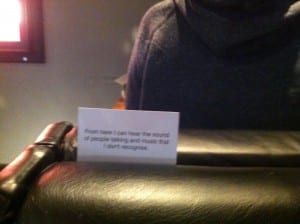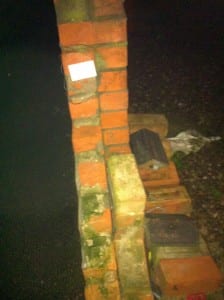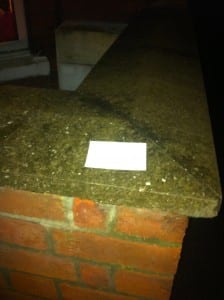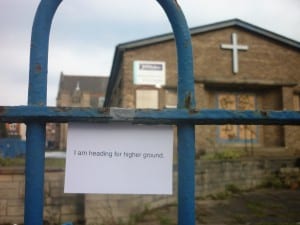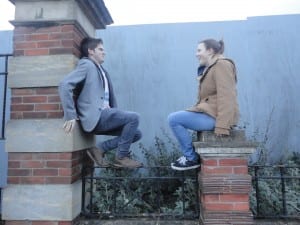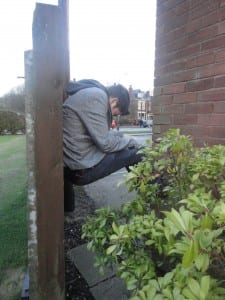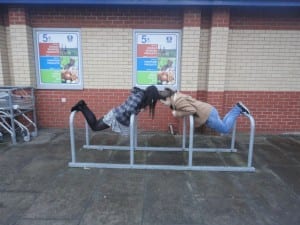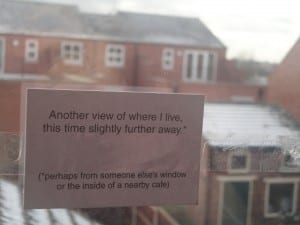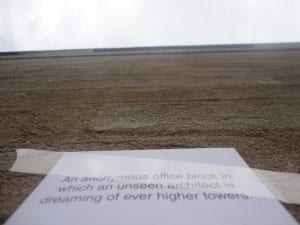‘Familiarity may not breed contempt, but it takes the edge of admiration.’ William Hazlitt
Three cards, wandering lincoln finding places that we felt the words on the card reflected or told us to place them. I found upon reading them, that infact they were not undiscovered places the cards needed to be hidden, securely stowed. But places I walk past every day, places the words on the car reflected and I subconciously had kept account of. My own street became the new homes to two of my cards as it wasn’t until I stopped and thought, that I realised, my seemingly humble,e quite road possesed such mysterious, subtle activity. A cat roaming its pavements, lit up windows easily accessible to the curious eyes of pedestrians, voices heard through thin brick, and over gates. Again my drifting opened my narrow gaze to the enchantment of a road I walk up and down in and out of countless times a day. If it was not for the drifting opening my mindset and eyeline I would not daily be rejecting Hazlitts quote
Card One: ‘From here I can hear the sound of people talking and music I don’t recognise.’
Placed in Vodka Revolution booths, behind a speaker and stranger, both echoing unfamiliar words, conversations and rhythms.
Card Two: ‘There are ruins and buildings that will eventually become ruins and people that will eventually become bodies.’
Placed on a broken wall next to my house, littered with smashed bricks and fragmented concrete blocks. Been in ruins since I have moved in, curiously nobody has ever touched it.
Card Three: ‘ A shot from distance of other peoples houses, perhaps where a cat picking its way along the wall.’
Placed on the corner of my house, unfortunately cats were not present, but it is the exact spot where a robin sits everyday. Opposite the other side of the street lined with houses.
The second card began to resonate with me and I felt a sense of sorrow when leaving it on such a discarded and disheveled wall. In a way I began to feel like that about our performance being left on the Grandstand. The building once so glorious is left stood alone broken and unfixed. The card reminded me of the process and hours we will have departed with when at the grandstand and eventually the remains of our performance, the odd penny it came to light later on. I had mixed feelings about finishing our piece, but hoped the messaged we left would be powerful, it began evident to me after or performance that we did not leave the message at the site. It was shared with the people that visited it as we educated them in the lives lost and they carried that away back into society hopefully sharing and questioning the message back into moving life.
